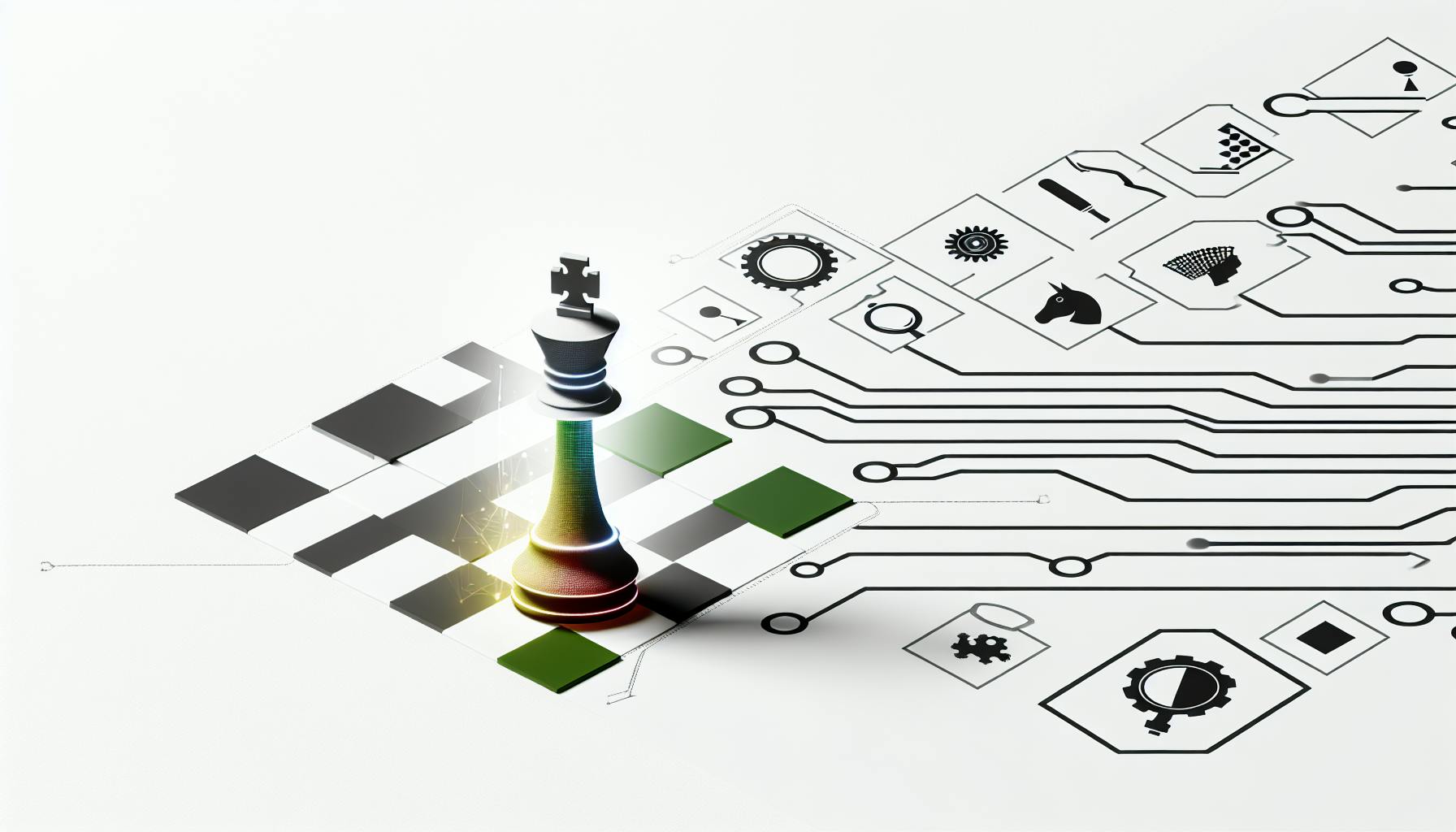Most professionals would agree that taking a personalized approach to career development is crucial for employee growth and retention.
In this post, you'll discover the essential strategies for building personalized career development programs that focus on individual strengths, skills, and aspirations to unlock each employee's full potential.
You'll learn how to conduct personalized skills assessments, craft development plans tailored to each person, provide coaching and mentoring, leverage technology for insights, and supply ongoing support to help employees thrive in their careers.
The Need for Personalized Career Development
Personalized career development is crucial for organizations that want to boost employee engagement and retention. Traditional one-size-fits-all approaches often fail to meet individual employees' needs and aspirations. By taking a more tailored approach, companies can foster greater satisfaction and nurture top talent more effectively.
Defining Personalized Career Development
Personalized career development involves creating customized career plans and guidance based on each employee's unique strengths, interests, and goals. Key elements include:
- Comprehensive skills and competency assessments to identify current capabilities and future potential
- Tools for employees to articulate their own career goals and preferences
- Algorithms to match employees with suitable development opportunities and career paths
- Regular check-ins and adjustments as employees' goals evolve over time
The aim is to move away from a standardized process and instead provide targeted support to help each person progress in line with their own objectives.
The Benefits of a Personalized Approach
Adopting personalized career development delivers multiple advantages, including:
- Improved employee satisfaction by enabling people to shape their own career journeys around what matters most to them
- Enhanced retention as employees feel valued and invested in
- More efficient development as effort is focused around individuals' needs rather than a one-size-fits-all program
- Stronger succession pipelines as rising talent is nurtured effectively to fill key roles
The payoff for this tailored investment is a more engaged, fulfilled workforce.
The Role of Personalized Guidance on Career Paths
Personalized guidance around career trajectories is key within this process. This starts by helping employees identify the paths aligned to their strengths and passions. Guidance should then provide tailored advice on development areas to pursue, training to undertake, and milestones to work towards based on the employee's aspirations.
This expert direction gives individuals a clearer roadmap for how to navigate their career progression successfully. It enables them to focus their efforts on the customized activities that will have the greatest impact for their personal growth and career advancement.
How do I create a personal career development plan?
Creating a personalized career development plan is essential for guiding your professional growth. Follow these key steps:
Understand your current position
- Objectively evaluate your role, responsibilities, skills, and experience
- Identify strengths to build on and weaknesses to improve
Define your career goals
- Envision your dream job and career aspirations
- Set specific, measurable, achievable, relevant and time-bound objectives
Analyze your skillsets
- Catalog your hard and soft skills
- Recognize abilities requiring further development
Find development opportunities
- Research training, mentorship, job rotation, and stretch assignment options
- Leverage workplace resources like tuition reimbursement
Make an action plan
- Outline developmental activities tied to your goals
- Prioritize high-impact tasks with reasonable timeframes
Execute and track progress
- Follow through on planned development activities
- Measure milestones achieved against original targets
Creating and actively pursuing a personalized career plan enables you to intentionally guide your professional trajectory based on your unique strengths, interests and aspirations.
What is an example of a career development plan?
A career development plan for someone looking to make a career change could include the following key steps:
- Conduct a skills assessment to identify transferable skills as well as any skill gaps that need to be addressed
- Research potential new career paths that align with your interests, values, and abilities
- Set SMART goals for acquiring any additional education or training needed to qualify for the new career path
- Look for opportunities to gain relevant experience through volunteer work, side projects, freelancing, job shadowing, etc.
- Update your resume and LinkedIn profile to highlight relevant skills and experiences for the new career path
- Expand your network by connecting with professionals working in your target field
- Apply for jobs once you have gained the necessary qualifications and experience
For example, a project manager looking to transition into a sales role would need to work on developing strong communication and presentation abilities. They may volunteer to take the lead on client presentations to gain more experience. Or they could complete sales training programs and shadow sales reps at their company. With the right development plan, they can gain the skills needed to ultimately transition into a sales position.
What is an EY badge?
EY Badges are digital credentials that demonstrate your skills, capabilities, and commitment to continuous learning. They provide a portable and shareable way to showcase your expertise and achievements, both within EY and externally.
Here are some key things to know about EY Badges:
-
Skills Validation: EY Badges validate your proficiency in specific skill areas that are relevant to your role and align to EY's capabilities. They provide a credential that is based on objective assessments.
-
Shareable Credentials: Once earned, EY Badges can be easily shared and displayed on your resume, online profiles, and social networks. This allows you to showcase your skills in a verified way to colleagues, clients, and external networks.
-
Motivates Development: By identifying specific skill badges to earn, EY Badges provide goals to motivate your learning and development. Going through the badge earning process helps drive the continuous improvement that is valued at EY.
-
Tracks Progress Over Time: The EY Badges platform allows you to track your progress and see all the skills badges you have earned over time. This provides visibility into your growing expertise. New badges can be earned as you take on new roles and develop new capabilities.
In summary, EY Badges recognize your dedication to building your skills and expertise. They provide digital credentials that can demonstrate your capabilities and commitment both within and beyond EY. The shareable badges motivate continuous learning and provide transparency into skill proficiency.
What are four best practices to follow in creating a career development plan?
Here are four key best practices for creating an effective career development plan:
Understand Yourself First
- Assess your skills, interests, values, and career aspirations. Identify strengths to build on and development areas to improve. Self-awareness is vital.
- Personality and career interest assessments like Myers-Briggs, Strong Interest Inventory, or Gallup Strengths Finder can provide useful insights.
Research Potential Career Paths
- Explore various careers and roles aligned to your strengths and interests.
- Talk to professionals in your desired field to learn more about the typical career journey.
- Identify required competencies and qualifications for your preferred career options.
Map Out Development Goals
- Outline short and long-term career goals, including target roles and realistic timelines.
- Determine developmental priorities - training, mentoring, project experience, skills development, etc.
- Create a structured plan with specific action steps to guide your career growth.
Regularly Re-Evaluate and Update
- Review your career plan every 6 months and make adjustments as needed.
- Validate that development activities align to your latest career aspirations.
- Update goals to reflect new experiences, interests or external changes.
Following structured best practices ensures your career plan stays relevant and actionable as your career progresses. The key is balancing self-understanding, intentional development, and regular re-evaluation.
sbb-itb-34a8e9f
Assessing Employee Skills, Interests and Aspirations
Understanding each employee's unique talents, motivations and goals is critical for shaping personalized career development plans. By conducting skills assessments and having effective career conversations, HR can map competencies to growth opportunities aligned with individual aspirations.
Conducting Skills Assessments
-
Use validated skills assessment frameworks like SHL to evaluate both hard and soft skills. Assess technical abilities, cognitive abilities, personality traits and motivational drivers.
-
Supplement with 360-degree feedback from managers and peers on demonstrated competencies.
-
Identify skill gaps to target for development. Are there emerging skills needed for future roles?
-
Update assessments periodically to gauge progress.
Understanding Career Interests
-
Have regular one-on-one career conversations to understand motivations and interests. Ask open-ended questions and actively listen.
-
Encourage employees to share what parts of their job they find most meaningful and where they want to grow.
-
Discuss opportunities that align individual strengths to business needs. Explore lateral moves to build cross-functional skills.
-
Be prepared to challenge assumptions about role limitations and nurture aspirations.
Goal-Setting for Career Aspirations
-
Use career conversations to collaboratively set 3-5 year goals based on interests. Make goals S.M.A.R.T. - Specific, Measurable, Achievable, Relevant and Time-bound.
-
Set milestones mapping out developmental assignments, training, mentoring and other growth opportunities for achieving goals.
-
Revisit goals periodically to update based on evolving interests and business priorities. Measure progress during performance reviews.
-
Publicly recognize employees who achieve career goals to motivate others.
Integrating Personalized Career Development in Assessments
-
Treat career development as an ongoing process, not a one-time event. Continually assess competencies and interests.
-
Use AI algorithms analyzing skills assessments, career conversations and goals to recommend personalized development opportunities.
-
Stratify assessment data to uncover development needs for critical roles, functions and talent segments.
-
Analyze aggregate assessment data to shape organizational development strategy and offerings.
Crafting Personalized Development Plans
Creating personalized career development plans tailored to each employee's strengths, interests, and aspirations is key for supporting professional growth. Here are some strategies for crafting effective personalized plans:
Mapping Developmental Opportunities
Conduct skills and competency assessments to identify current capability gaps and areas for growth. Connect these to specific training programs, on-the-job activities, coaching opportunities etc. that allow employees to build expertise. Track progress over time.
Blending Formal and Informal Learning
Formal training through courses and certifications builds foundational knowledge, while informal learning from real work activities cements capabilities. Blend both approaches, ensuring adequate time for applying formal learnings on-the-job under guidance of mentors and coaches.
Goal-Based Tracking and Evaluation
Collaboratively set tangible metrics and milestones based on the employee's career goals and motivations. These will serve as progress tracking benchmarks to objectively evaluate plan effectiveness and iterate as needed.
Personalizing Development Milestones
Each career journey is unique - ensure major milestones recognize individual accomplishments like completing a desired certification, skill level upgrade, special project delivery, readiness for promotion etc. Celebrate these personalized achievements.
In summary, career development plans tailored to employees' specific aspirations, competencies and paces foster engagement and retention while aligning talent growth to organizational needs. The key is understanding motivations, blending formal and informal learning, tracking meaningful metrics and celebrating personalized milestones.
Implementing Personalized Guidance on Career Progression
Providing employees with ongoing, tailored advice can greatly assist them in effectively navigating their career paths within an organization. This personalized approach to career development ensures that each employee's unique skills, aspirations, and needs are supported.
Mentorship and Coaching Programs
Implementing formal mentorship and coaching initiatives creates opportunities for personalized career guidance. Matching mentees with compatible mentors allows for the nurturing of long-term, trusting relationships where candid career conversations can occur. Through regular check-ins, mentors can provide advice tailored to the mentee's strengths, development areas, and goals. Personalized coaching can also help individuals gain clarity on career directions aligned to their passions.
Using Technology for Personalized Career Insights
Career development software and analytics tools can provide data-driven insights to inform personalized guidance. By analyzing employee skills, performance data, job role propensities, and survey feedback, these platforms can generate tailored recommendations on optimal career moves. Leadership can use these insights to have informed career conversations, while employees can leverage the self-service tools to find pathways aligned to their aspirations.
Regular Career Check-Ins
Frequent and structured career discussions should occur between employees and their managers or HR partners. Preparing personalized talking points prior to each check-in enables tailored conversations focused on the individual. Discussing short and long-term career goals, skills development opportunities, mentorship options, and potential next moves provides personalized guidance based on where the employee currently is in their progression journey.
Providing Ongoing Support for Success
Emphasizing consistent coaching and resources is critical for employees to achieve their career goals.
Active Progress Monitoring
It is important to regularly check in with employees to track their advancement towards their career goals. This can be done through monthly one-on-one meetings, quarterly career development reviews, or an online portal where employees can update their progress. The frequency should align with the timeframe of the career development plans.
Feedback and Adjustments
Employees should have opportunities to provide feedback on what is working well and what can be improved in their career development journey. Based on this input, managers can make adjustments to plans by realigning development opportunities, modifying stretch assignments, or changing the focus of skill building. This ensures the experience remains personalized and responsive to evolving needs.
Celebrating Wins Along the Way
Recognizing incremental achievements, no matter how small, is essential to keeping employees motivated to pursue their career goals. Managers can celebrate via email shout-outs, awards, profile features, small gifts, or simple verbal recognition. This positive reinforcement fuels engagement and momentum.
Challenges and Considerations in Personalized Career Development
Obtaining Buy-In at All Levels
Gaining support for personalized career development initiatives requires clearly communicating the benefits to leadership, managers, and employees. Some strategies include:
-
Present a business case for development programs by connecting them to larger organizational goals like retention, engagement, and performance. Use data and metrics to demonstrate the impact.
-
Emphasize the value proposition for each stakeholder group. For example, highlight how it can aid managers in coaching and growing team members.
-
Involve stakeholders early by getting input to shape the program's design and features. This builds investment in the process.
-
Offer examples of success stories from other companies who have implemented personalized approaches to make the concepts less abstract.
-
Start small with a pilot program as a low-risk way to demonstrate potential before expanding organization-wide.
Allocating Sufficient Time and Resources
Providing personalized career development at scale requires dedicated budgets and staff to support the operational needs:
-
Assess program costs like software, content building, training, and coaching. Determine if reallocation of existing L&D budgets is feasible.
-
Account for employee time to partake in development activities without compromising core job duties through workload adjustments.
-
Consider phased rollouts if large-scale implementation is not initially feasible, gradually expanding over time.
-
Leverage program champions who enthusiastically adopt early on to help drive engagement.
-
Develop success metrics and track progress to showcase ROI and justify continual resource allocation.
Scaling Personalized Approaches Across the Organization
With growing and dispersed workforces, providing individualized career guidance organization-wide brings scaling challenges:
-
Take a modular approach to customize content for different roles, locations, and teams rather than one-size-fits-all.
-
Build a centralized knowledge base of development resources that can be tailored down to personalized recommendations through AI.
-
Equip managers with training and tools to have development conversations despite not having constant in-person interaction.
-
Use collaboration platforms to share best practices on coaching employees virtually while maintaining personalization.
-
Automate components through tech like machine learning recommendations to augment high-touch aspects that require manual customization by managers.
Conclusion and Key Takeaways
Personalized career development programs are essential for empowering employees, boosting engagement and retention, and nurturing talent from within. As organizations shift towards more individualized guidance, here are some key takeaways:
Summary of Best Practices
- Conduct regular career conversations to understand employee aspirations
- Build individual development plans aligned to strengths and interests
- Offer mentoring and stretch assignments for skill-building
- Leverage AI and data analytics to provide personalized recommendations
- Track progress and iterate on program based on feedback
Next Steps for Implementation
To begin rolling out personalized initiatives:
- Survey staff to gather insights on career goals
- Identify capabilities critical for advancement
- Map existing roles to potential career paths
- Pilot 1-on-1 coaching sessions with high potentials
- Develop templates for individualized development plans
Starting small and iterating based on learnings will ensure programs evolve to meet unique needs. The time is now to nurture talent and promote from within.


